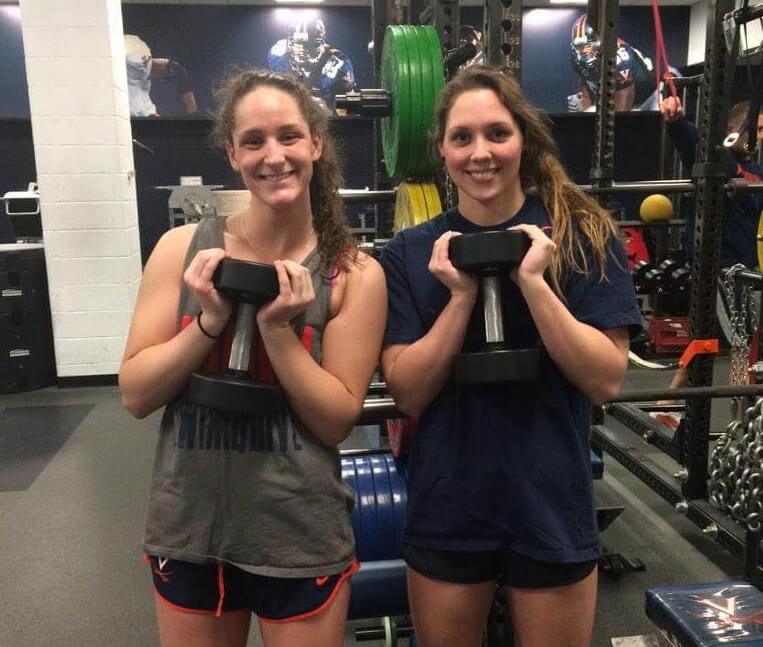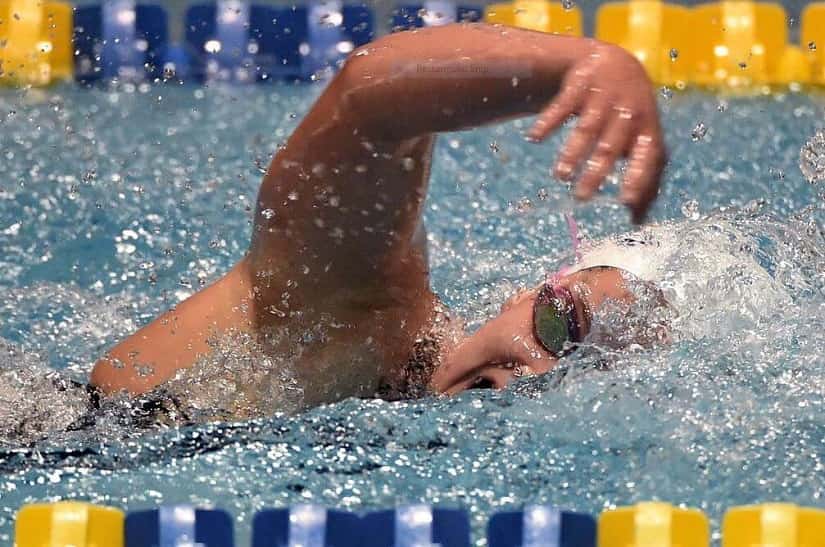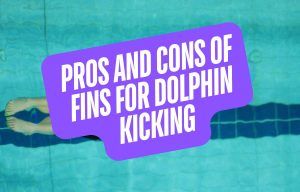Swimmers work hard in the pool, where they learn the lessons of progression, mastering the process, and staying ahead of the injury curve.
And yet, too often, this attention to detail is not carried over to the dryland workouts swimmers do to build swim-specific strength.
Jun Jeong, the strength and conditioning coach for the men’s and women’s swimming and diving program at the University of Virginia has these pointers for swimmers–both prospective and current–looking to take their performance to the next level during their collegiate swimming careers.
1. It’s not always about going heavy.
If there is one great equalizer in the pool it’s this: technique will always trump brute strength. As swimmers, we understand the sneaky power that comes with developing superior technique and efficiency.
This is no different in the gym.
There are times–just like in the pool–where it’s not about max effort. It’s about producing good movement patterns, in the same way that we do a specific drill in the pool. Strength training exercises for swimmers should be done with killer technique and precision.
“When coming into the weight room, athletes are always tempted to try the heavier weights or the harder exercise–that’s how we’re wired,” says Jeong.
“But if the training program calls for a certain percentage, rep scheme, or exercise that may not be as challenging, don’t go ahead and deviate from that just to make it harder.”
It’s tempting to go for the heaviest weights right off the bat, as that’s how we tend to value the worth of strength training. We assume that the heavier, the better.
“Focusing on an efficient movement that is deliberate and safe gives you way more return than something that looks like you’re doing a worm on the floor.”

2. Trust the program.
Having the endless troves of the internet in your hands is a double-edged sword. On the one hand, you can learn just about anything you could ever want to know about any angle on high performance in the water and in the gym.
And on the other, it can cause you to sow doubt into what you are doing in the gym when you find conflicting advice on the internet (and you can always find conflicting advice somewhere).
Your strength coach is a certified expert, and particularly at the collegiate level, has experience working with high-performance swimmers.
“Your strength coach has the best in mind for you and following the program to a tee will give you the best results,” notes Jeong.
“Simply put: place your ego aside and have an open mindset.”
3. Don’t muscle through injuries.
Swimmers, like all athletes, inevitably suffer from some sort of injury in the pool. Whether it is a one-off injury incurred in the water or gym, or something chronic like swimmer’s shoulder, there comes a point in every serious swimmer’s journey where they are faced with an injury.
At this point, it’s critical to listen to your body, not ignore the warning signs, and to communicate what is going on with the coaching staff so that they can support you as necessary.
“If some part of your body, tell your strength coach and/or athletic trainer,” notes Jeong.
“The worst thing you can do is to train through the pain because it will only make things worse or possibly ruin your career. Know the difference between soreness and pain and react accordingly.”
4. Train with purpose.
Elite athletes and swimmers are no different, find satisfaction and pleasure in training with a purpose. Why does training with purpose matter?
Because it’s an essential component of mastering the day-to-day process of getting better. Of making the incremental improvements that cascade into large breakthroughs over the long term.
When you are engaged in the pool, results follow. This is no different in the gym.
“The more you treat training like a list of errands, the less likely you are going to enjoy it and reap results,” says Jeong.
“Everything you do–from a practice session down to a single exercise–should have a purpose. Train with purpose.”
Wise words, indeed.














